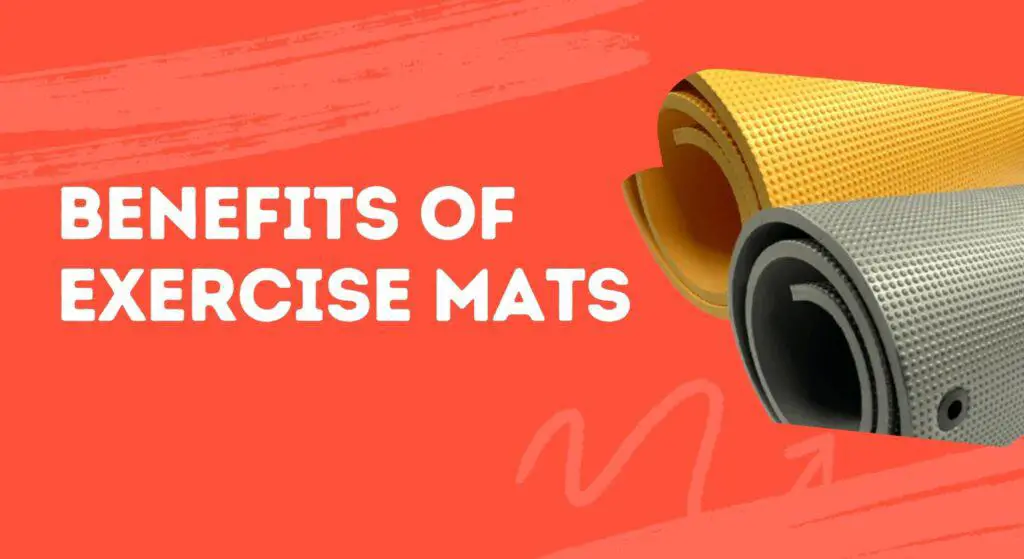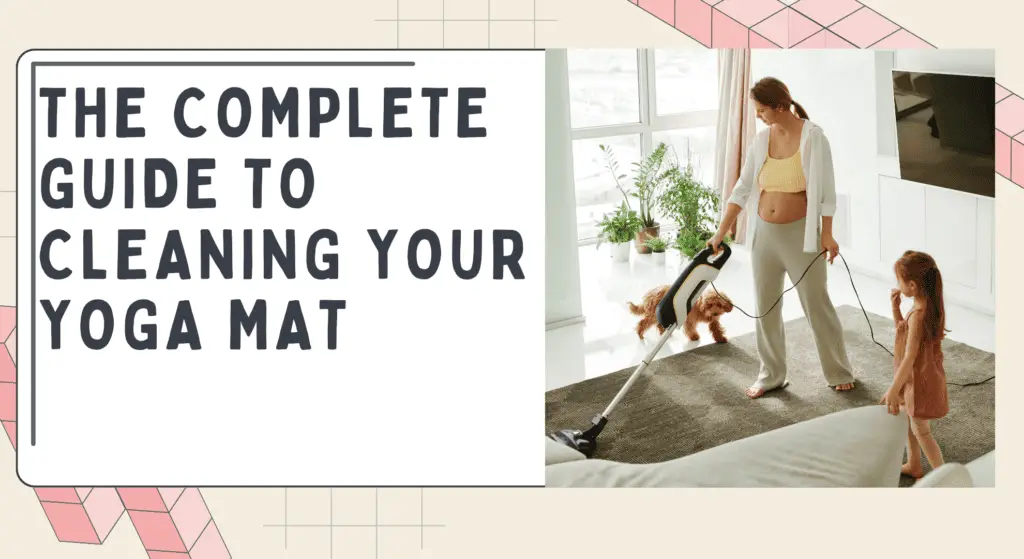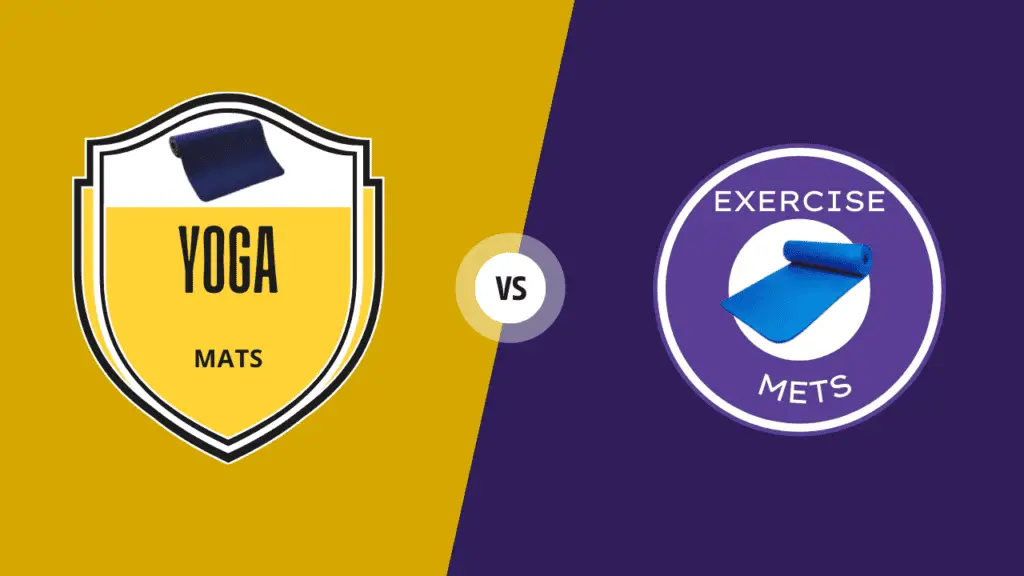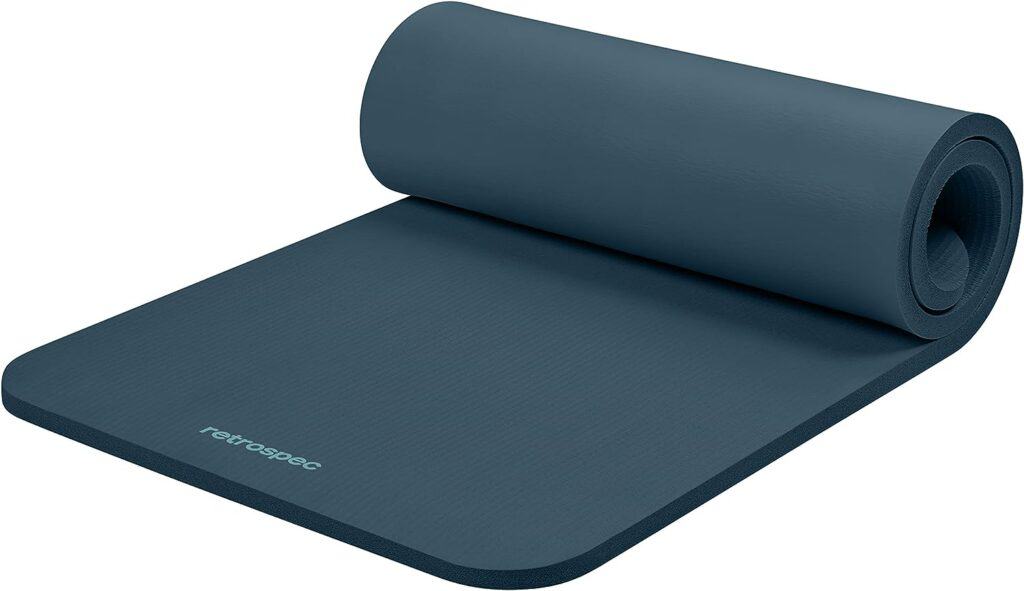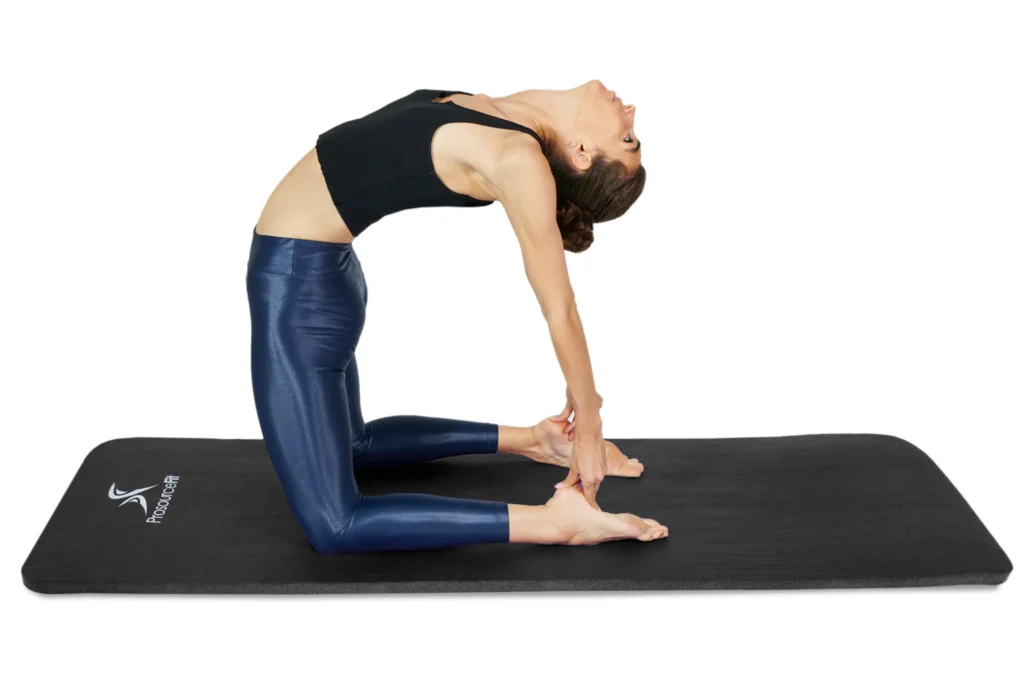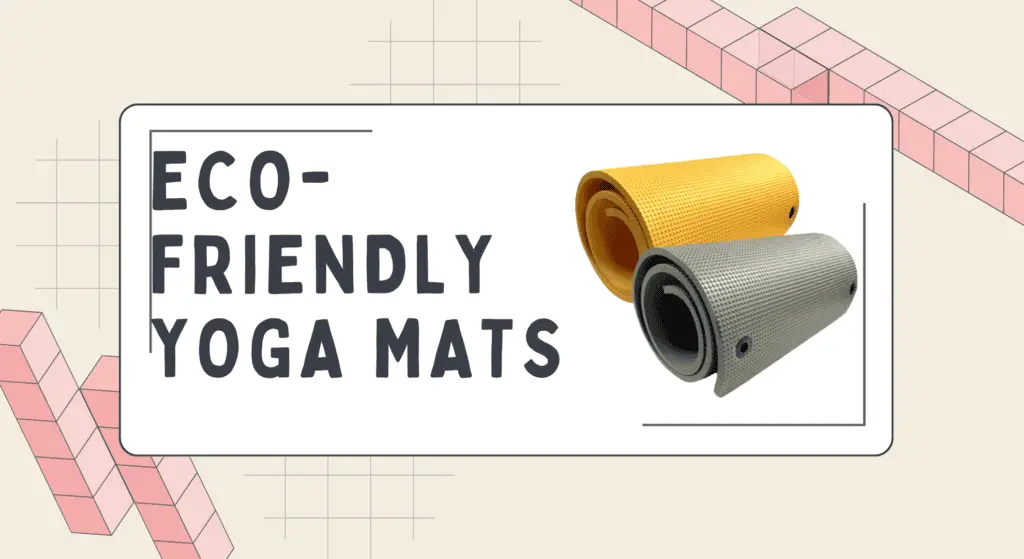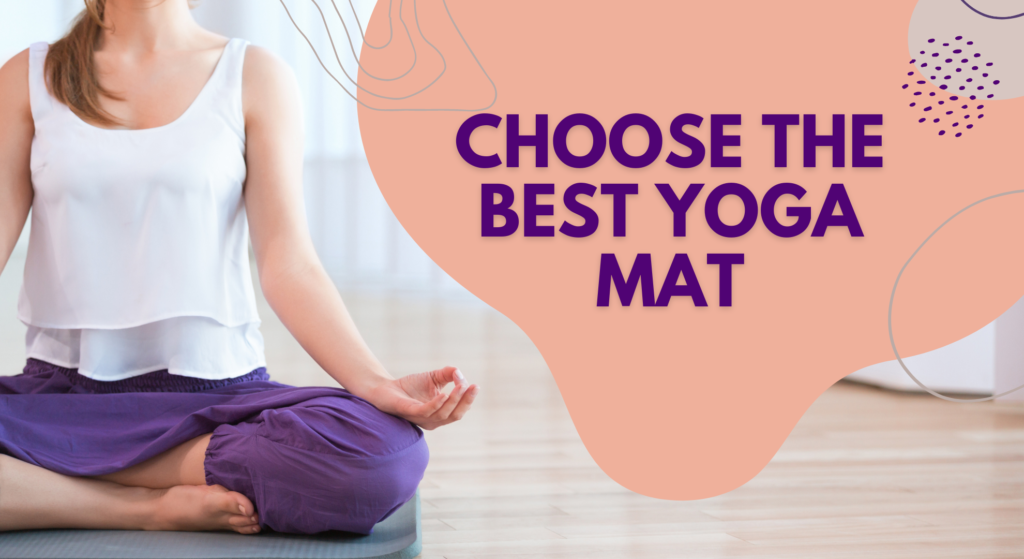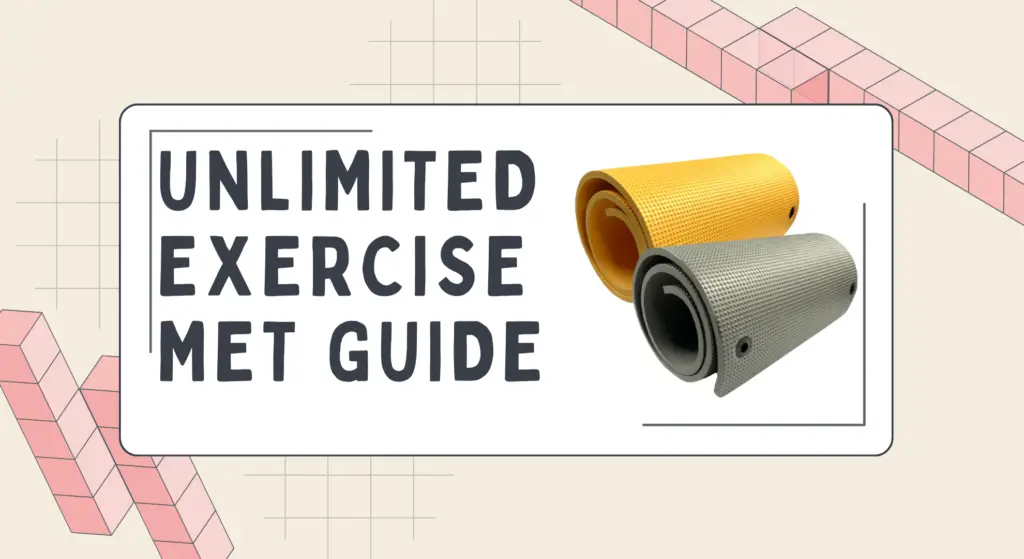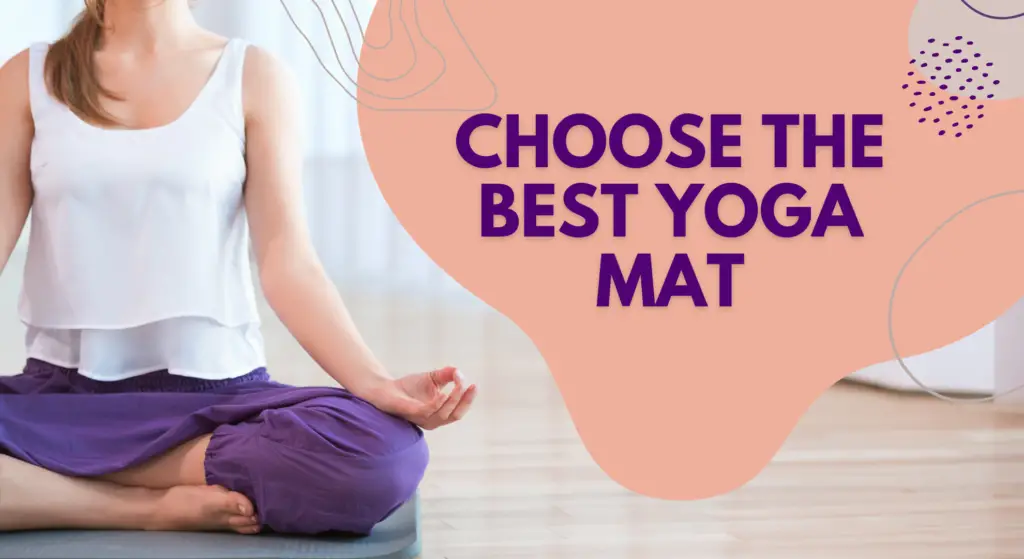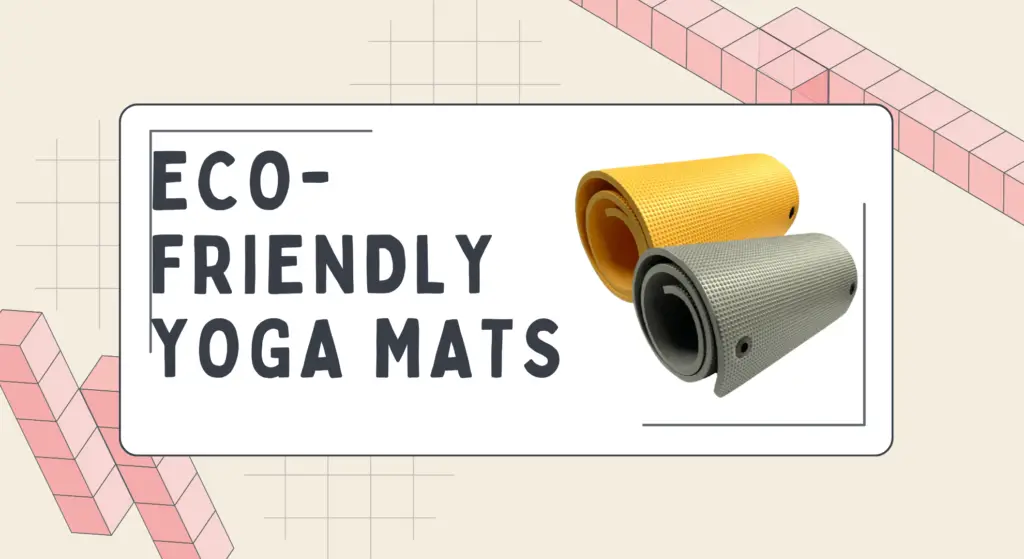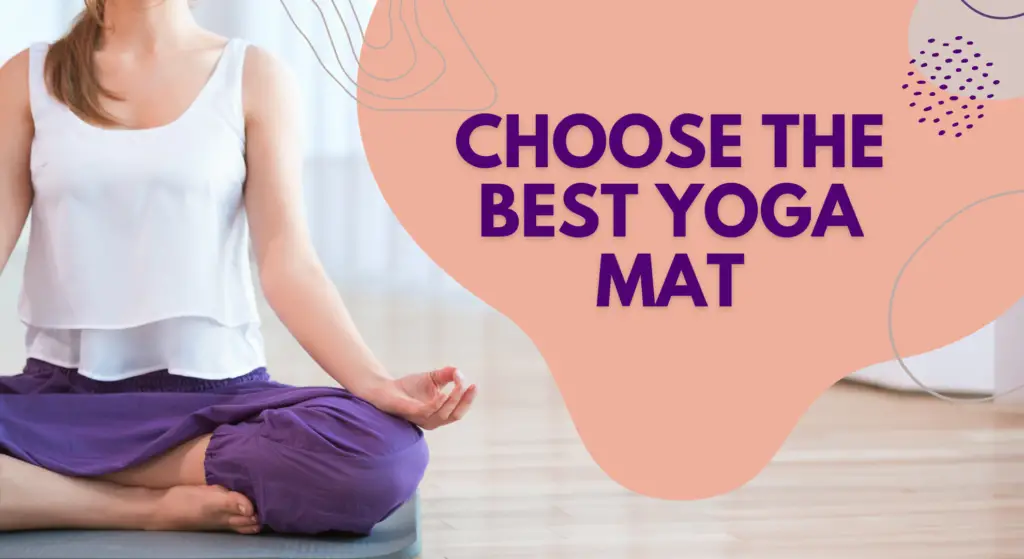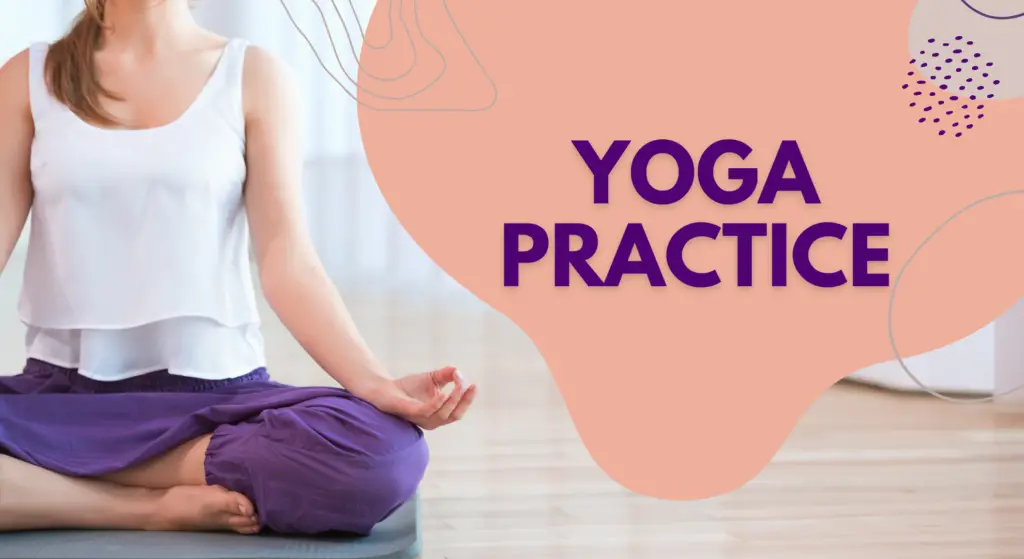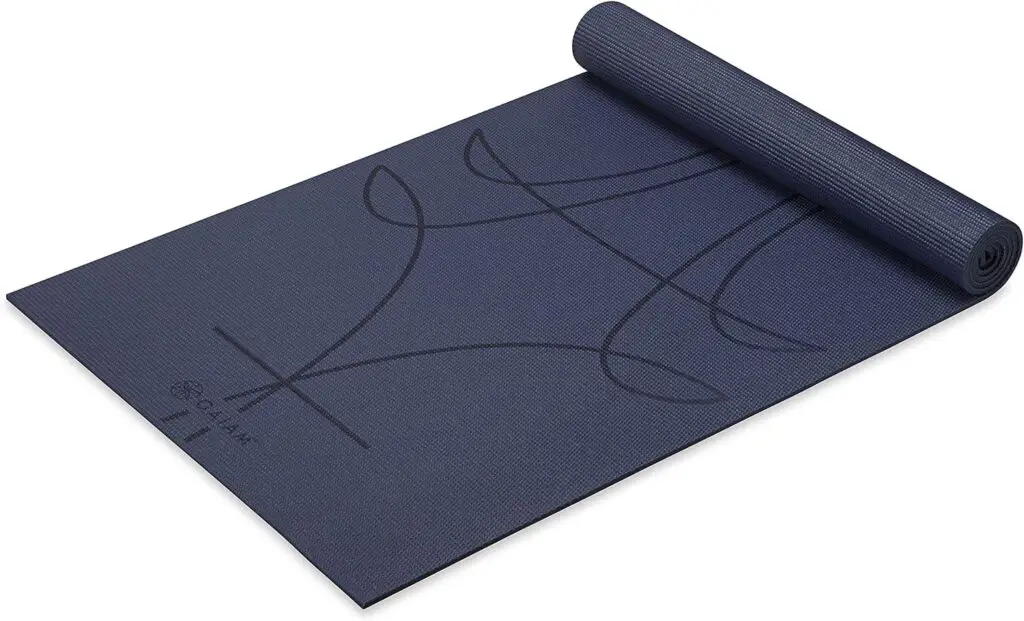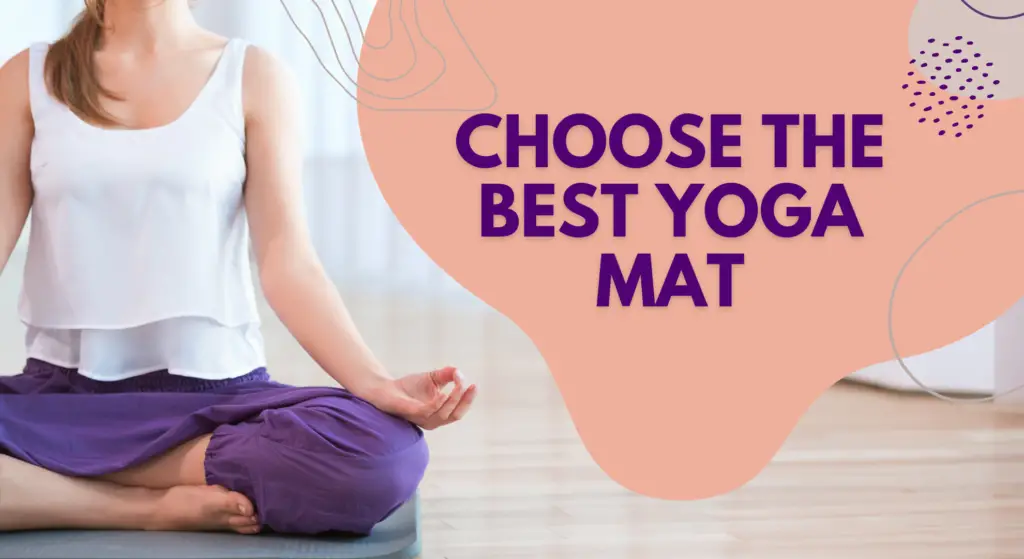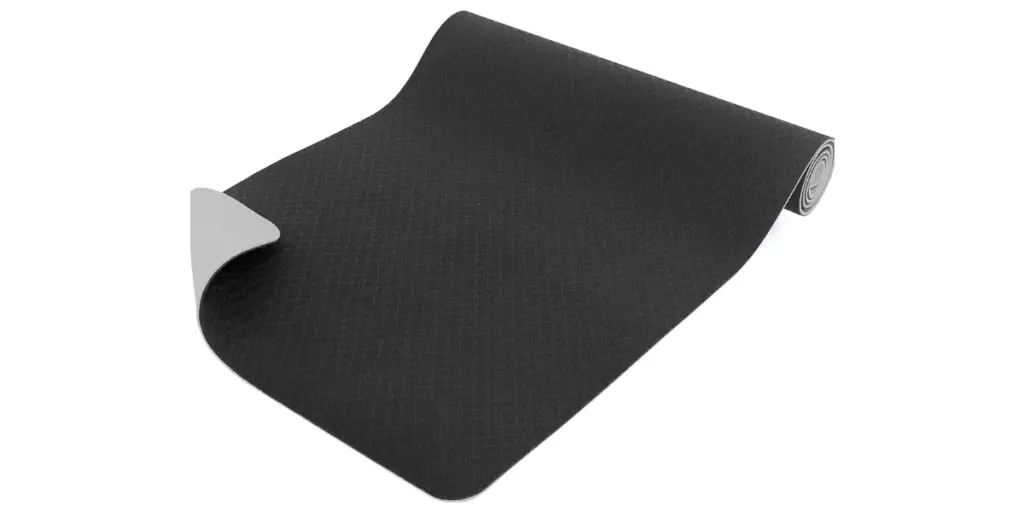
With yoga’s meteoric rise in popularity, eco-conscious yogis everywhere are seeking sustainable workout gear that aligns with their values. Enter TPE yoga mats – an environmentally friendly alternative to traditional PVC mats. But you may be wondering, “Is TPE Yoga Mat Safe?” This detailed guide will explore the benefits and potential concerns around these eco-friendly mats so you can make an informed choice and practice with peace of mind.
Thesis: TPE (thermoplastic elastomer) yoga mats are a non-toxic, biodegradable option that provides excellent grip and cushioning for your yoga practice. However, it’s still important to understand exactly what TPE is made of and ensure you purchase from a reputable brand to avoid any contamination risks. By the end of this article, you’ll have a comprehensive understanding of TPE yoga mats and whether they are the right choice for your sustainable yoga journey.
Table of Contents
What is TPE?
TPE stands for thermoplastic elastomer, which is a type of rubber-like plastic material. It’s created by combining traditional plastics like polypropylene with rubber polymers like EPDM or SEBS. This unique blend gives TPE the versatility and performance of rubber along with the processability of plastics.
The key difference between TPE and traditional yoga mat materials like PVC is that TPE does not require the addition of heavy metal stabilizers, phthalate plasticizers, or other toxic additives to achieve its flexible yet resilient structure. This makes TPE an environmentally friendly choice for yogis seeking green alternatives.
It’s important to note that while TPE is derived from plastic sources, it is mechanically recyclable and will biodegrade much faster than PVC when discarded properly. Many TPE yoga mat brands emphasize using recycled or biodegradable TPE formulas in their products.
Benefits of TPE Yoga Mats
So what makes TPE yoga mats so appealing beyond just being eco-friendly? Let’s dive into some of the key practical benefits:
Excellent Grip & Cushioning: The rubberized texture of TPE provides a natural grip that prevents slipping during your sweatiest vinyasas. At the same time, the dense cushioning offers impact protection for achy joints during floor poses.
Free of Toxins & Odors: Unlike vinyl/PVC mats which can leach phthalates and have an unpleasant plastic smell, high-quality TPE mats are free of toxic plasticizers, heavy metals, latex, and harsh odors. This makes them a safer choice, especially for hot yoga.
Water-Resistant & Easy to Clean: The closed-cell structure of TPE creates a nonporous, water-resistant surface that wipes clean easily and dries quickly. No more musty, bacteria-harboring mats!
Longer Lasting: While cheaper PVC mats can quickly develop hairline cracks and degradation, TPE mats are built to withstand years of use without peeling, flaking, or fading colors and patterns.
Sustainable & Biodegradable: As mentioned, TPE is derived from mechanically recyclable sources and will eventually biodegrade back into the environment, reducing its environmental impact compared to PVC.
Essentially, TPE checks all the boxes in terms of performance, health safety, low environmental impact, and longevity for eco-minded yogis.
Is TPE Yoga Mats toxic?
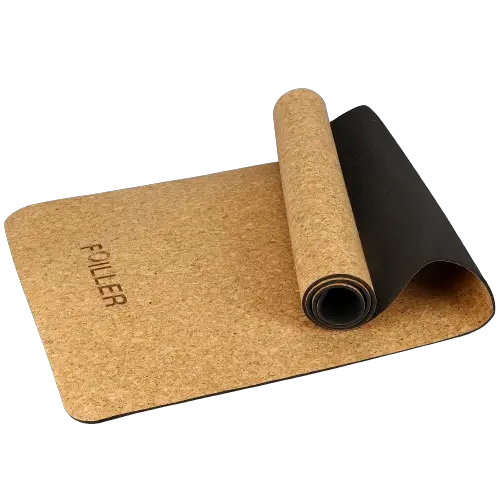
One of the biggest selling points of TPE yoga mats is that they are free of the toxic additives found in PVC mats like phthalates, lead, cadmium, and other heavy metal stabilizers.
Reputable TPE yoga mat brands will use high-quality TPE formulas that are certified non-toxic and free of these harmful compounds. Third-party tests have confirmed that high-end TPE mats meet or exceed safety standards.
However, it’s important to note that like any material, lower-quality TPE formulas from unscrupulous manufacturers could potentially contain trace amounts of contaminants or undisclosed additives. Cheaper TPE mats made with recycled plastic could also have residual chemicals leached into the TPE compound.
To avoid any risks, be a discerning consumer and only purchase TPE yoga mats from established brands with transparency about their eco-friendly, non-toxic TPE sources and manufacturing processes. Check for third-party safety certifications as well.
Additionally, some people may notice a mild, rubber-like smell when first unwrapping a TPE yoga mat, but this is a harmless odor from the rubber polymers and will quickly dissipate with air exposure. True off-gassing of volatile organic compounds (VOCs) is very minimal with TPE compared to vinyl mats.
Overall, high-quality TPE yoga mats from reputable sources are considered safe, non-toxic products when used as intended. But doing your research on brands will ensure you get a truly green product.
Comparing TPE to Other Yoga Mat Materials
To better understand if TPE is the right yoga mat material for your needs, let’s take a look at how it compares to some other popular options:
TPE vs PVC Yoga Mats:
TPE vs Rubber Yoga Mats:
TPE vs Natural Fiber Yoga Mats (Cork, Cotton, Jute):
As you can see, TPE manages to strike a great balance between eco-friendliness, durability, grip, cushioning, and moisture resistance compared to many other yoga mat materials. Its versatile performance and non-toxic composition make it an excellent all-around choice for safety-conscious yogis.
Is TPE good for yoga mat?
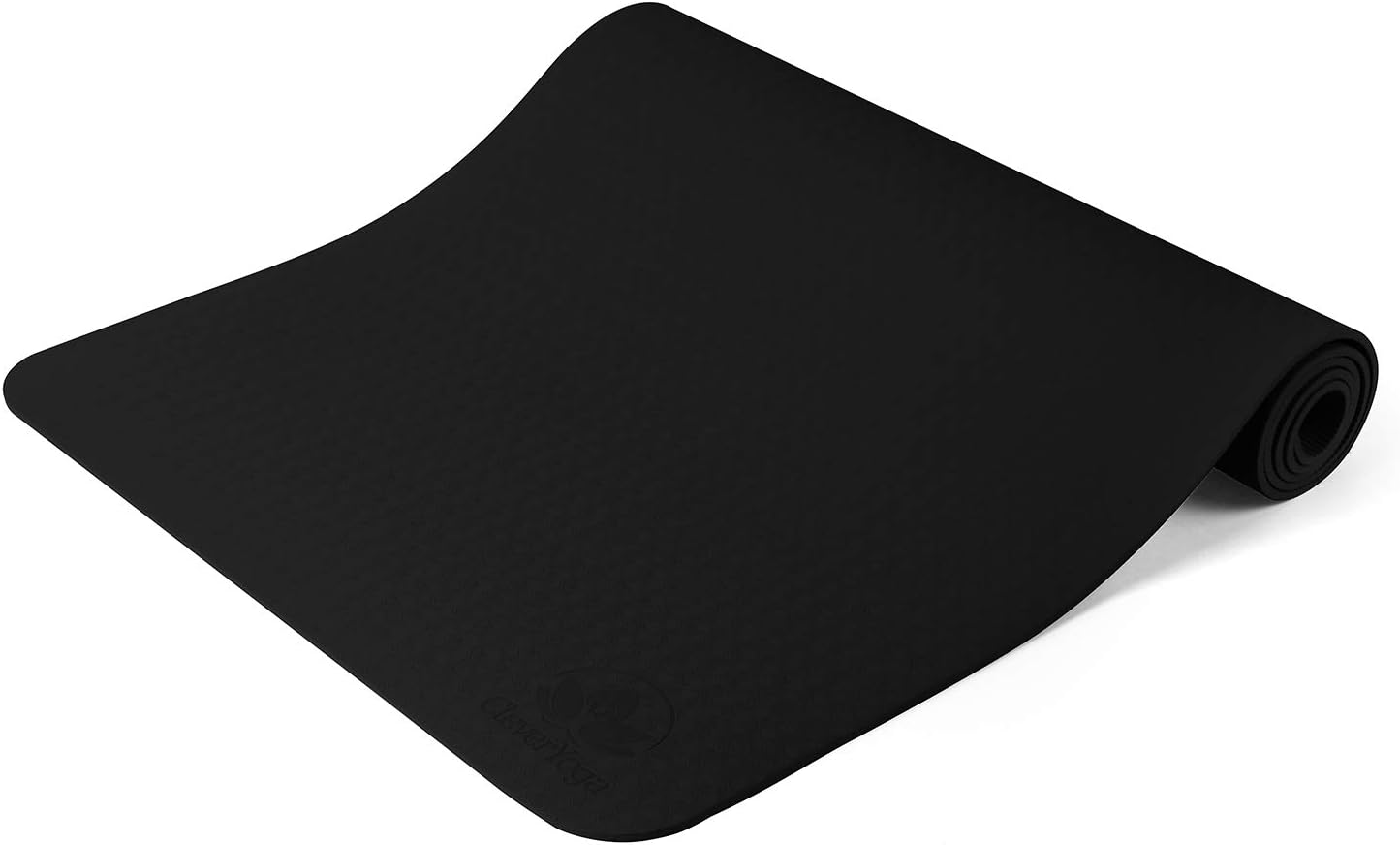
Yes, TPE (thermoplastic elastomer) is an excellent material choice for yoga mats for several reasons:
The combination of superior performance, health safety, durability and environmental benefits make TPE an exceptional all-around choice for yoga mats, especially for practices like hot yoga that are tough on gear. Many premium yoga brands like Lululemon, Manduka and Liforme have embraced TPE as their mat material of choice.
Top Rated TPE Yoga Mat review:
Ready to make the switch to an eco-friendly TPE yoga mat? Let’s preview some of the top brands that sustainability experts recommend:
Liforme TPE Yoga Mat – This cult favorite features an iconic alignment guide and GriPure material made from TPE that is 100% recyclable and biodegradable. It carries multiple eco-certs and is free of PVC, latex, and toxic adhesives.
Manduka PRO Yoga Mat – Manduka pioneered the TPE yoga mat space with their Pro line using proprietary OmGrip TPE rubber that delivers incredible grip and wears like iron. Each one is made from sustainable OmGrip TPE sources.
Eko Yoga Mat – This brand uses 100% non-toxic, biodegradable TPE compounds, water-based dyes, and sustainable rubber sources for their heated, reversible, non-slip mats. Many fun designs to choose from.
Alo Yoga TPE Mat – Made from moisture-wicking TPE that dries quickly and has excellent cushioning for high-intensity flows. Alo sources TPE from recycled plastics and waste rubber to close the loop.
No matter which you choose, sticking to reputable brands with transparent eco-manufacturing practices will ensure you get a safe, high-quality TPE yoga mat. Most companies will have clear safety certifications and disclosures about their TPE materials.
Top 5 TPE Yoga Mats for Unstoppable Grip and Cushion: Read now
Proper Care for TPE Yoga Mats
To get the longest, safest usage out of your TPE yoga mat investment, it’s important to follow some simple care guidelines:
Cleaning TPE Mats:
Storing TPE Mats:
Extending TPE Mat Life:
By keeping your TPE yoga mat clean, stored properly, and cycled regularly, you can maximize its working lifespan while avoiding any potential microbial or material breakdown issues
The Complete Guide to Cleaning Your Yoga Mat
FAQ: Frequently asked questions:
1. Is PVC in yoga mats safe?
PVC (polyvinyl chloride) has long been a popular and inexpensive material used in many yoga mats. However, there are growing health and environmental concerns around PVC that have led many yogis to seek safer alternatives.
The main issue with PVC is that it requires the addition of phthalate plasticizers to make it flexible and durable. Phthalates are chemicals that have been linked to asthma, reproductive issues, obesity, and other potential health problems, especially with prolonged exposure. Some governments have even banned certain phthalates in children’s products due to toxicity risks.
Additionally, the manufacturing of PVC creates and releases dioxins, which are persistent environmental pollutants. When PVC eventually gets discarded in landfills, it can leach additives into the soil and groundwater as it slowly degrades over decades or centuries. For these reasons, PVC has become known as one of the least eco-friendly plastics.
That said, most regulatory bodies like the Consumer Product Safety Commission consider PVC yoga mats compliant and safe for their intended use by healthy adults. The key is to choose mats from quality brands minimizing phthalates and other toxic additives in their formulas. Proper care like not wearing shoes on the mat and routine cleaning also reduces exposure.
But for those wanting to absolutely minimize their toxic load, many yogis are opting for phthalate-free, eco-friendly mat materials like TPE, natural rubber, jute or cork instead of PVC. With increased consumer demand, these sustainable yoga mat options are becoming more accessible and affordable.
2. Are cheap yoga mats safe?
When it comes to inexpensive yoga mats, you generally get what you pay for in terms of both quality and safety. Many bargain-priced mats from unknown brands raise some potential health concerns.
The biggest issue with cheap yoga mats is they are often made from lower-quality PVC vinyl formulas containing higher concentrations of phthalate plasticizers, heavy metals like lead, cadmium, or other industrial pollutants. Exposure to these toxins, especially over prolonged use, could potentially cause issues like hormone disruption, developmental problems, cancer, and other health impacts.
Cheap mats may also use inks, dyes, adhesives, or materials that give off volatile organic compounds (VOCs) like benzene or formaldehyde when off-gassing. These chemical fumes can cause headaches, nausea, and respiratory irritation with regular exposure.
Additionally, budget mats are usually much flimsier and prone to quicker breakdown, cracking, or flaking over time. As they degrade, there’s an increased risk of ingesting or inhaling any toxins present in their materials.
For a safe, long-lasting yoga mat, experts recommend investing in a quality product from an established brand using sustainable, non-toxic materials like TPE, natural rubber, jute, or organic cotton. While more expensive upfront, a premium mat pays off in health, durability, and peace of mind.
3. Can we do yoga on plastic mat?
While a plastic mat isn’t the ideal surface for yoga practice, it can work in a pinch if you don’t have a specialty yoga mat available. That said, there are some important factors to consider.
Most basic plastic mats are made from PVC vinyl or polyethylene plastic, which don’t provide the same grip and traction as the textured, rubberized surfaces designed for yoga. This becomes especially problematic when you start to sweat, as plastic can get extremely slippery and increase your risk of injuries from falls or slides.
Plastic mats also lack the cushioning and joint protection that yoga mats offer, particularly for floor poses or other positions that put pressure on your knees, elbows, etc. The hard plastic surface could cause discomfort or even bruising over time.
Additionally, many plastic mats are quite thin and flexible, making it difficult to keep a stable base and balanced form during standing poses and transitions. A yoga mat’s thickness provides a sturdier foundation.
From a hygiene standpoint, plastic mats are less breathable and absorbent than yoga mats designed with moisture-wicking technology. This could lead to sitting in sweat puddles and increased bacterial growth.
So in a pinch, a plastic mat can suffice for very gentle, dry yoga practices. But for anything more intense or sweaty, you’re much better off investing in a proper yoga mat made from materials like TPE, natural rubber, or microfiber that maximize grip, cushioning, and moisture control.
4. Is foam or rubber better for yoga mat?
When comparing foam vs rubber as materials for yoga mats, there are some key differences to consider in terms of factors like grip, cushioning, durability and environmental impact.
Foam yoga mats, usually made from PVC or polyurethane foam, tend to provide more cushioning and padding underfoot. This can be preferable for styles of yoga with many floor poses to avoid discomfort on bony joints like knees and elbows.
However, foam mats generally don’t offer as much traction as rubber variations. They can become quite slick, especially when wet with sweat, making it easier to slide out of poses. The cushioning softness of foam can also make it harder to ground and balance in some postures.
On the other hand, rubber yoga mats made from natural or TPE synthetic rubber provide excellent grip and traction. The textured, sticky surface allows for freedom of movement without slipping. Rubber also lends more stability and firmness than spongy foam options.
The drawback of rubber is reduced cushioning, which some may find uncomfortable during long floor poses. Though many premium yoga mats strike a balance with a cushioned rubber top and grip bottom layer.
From a longevity standpoint, rubber definitively outperforms foam. Foam can tear, dent, discolor and break down rather quickly with frequent use and cleaning. Quality rubber mats are built for years of consistent usage.
Finally, natural rubber yoga mats are an eco-friendly, biodegradable choice over synthetic foam options. Though TPE rubber mats are also relatively sustainable.
Overall, prioritizing traction, durability and environmental impact makes rubber the better all-around yoga mat material for most people compared to foam. But foam can work well for gentler practices prioritizing cushioning.
5. Is TPE toxic to people compared to PVC?
No, TPE (thermoplastic elastomer) yoga mats are considered much safer and less toxic for human health compared to traditional PVC vinyl mats. This makes TPE an excellent eco-friendly alternative.
The key issue with PVC mats is that they require phthalate plasticizers and other chemical additives like lead and cadmium to remain flexible and durable. Phthalates in particular have raised red flags as potential endocrine disruptors and carcinogens with repeated exposure.
In contrast, TPE is a rubber-plastic compound that achieves its elasticity and performance without the need for these concerning additives. High-quality TPE yoga mats are certified free of phthalates, heavy metals, latex and other toxins.
TPE is also a more sustainable material than PVC. Most TPE formulas are made from recyclable, biodegradable sources like plant-based polymers and recycled rubber. Whereas PVC is a type of vinyl that takes hundreds of years to break down and often ends up lingering in landfills.
While any plastic-derived product should be used with moderation, third-party testing shows that TPE yoga mats emit very low levels of volatile organic compounds (VOCs) compared to the off-gassing issues associated with PVC mats.
You may notice a mild, inert rubber smell when first unwrapping a new TPE mat. However, this is simply the odor of the rubber polymer blend and is not indicative of toxic outgassing. The smell should quickly dissipate with air exposure.
So in summary, TPE yoga mats from reputable brands are designed to be an eco-conscious, non-toxic alternative to PVC without sacrificing performance. Their sustainable, body-safe construction makes TPE mats an excellent choice for health-minded yogis.
6. Do yoga mats have toxins?
While yoga is intended to cultivate wellness, unfortunately, some yoga mats do contain potentially toxic substances depending on the materials they are made from and the manufacturing processes involved.
The biggest toxin concerns arise with cheap yoga mats made from lower-grade PVC vinyl. These often include phthalate plasticizers, heavy metals like lead, and cadmium, and other industrial chemicals as softening additives to increase flexibility.
Phthalates in particular have raised red flags as possible endocrine disruptors and carcinogens with prolonged exposure. Their toxicity risk has led them to be banned from children’s products in many countries. Heavy metals like lead are also potent neurotoxins.
Even some natural rubber yoga mats sourced cheaply can contain traces of toxins like nitrosamine impurities from the vulcanization process used to cure the rubber.
Additionally, yoga mats may be treated with adhesive compounds, azo dyes, flame retardants or antimicrobials that could potentially break down into concerning substances over time.
Thankfully, reputable brands now offer premium yoga mats free of these toxic ingredients. Look for TPE (thermoplastic elastomer), PU (polyurethane), cotton, jute, cork, or other plant-based, non-toxic materials transparently sourced.
Quality mats certified by organizations like OEKO-TEX for body-safe materials should contain no heavy metals, plasticizers, solvents, or other pollutants above trace levels. While no product is 100% risk-free, investing in a non-toxic yoga mat is ideal.
7. Is there a difference between cheap and expensive yoga mats?
Yes, there are significant differences between budget vs premium yoga mats in regards to materials, performance, safety, and durability that make spending more worthwhile for avid yoga practitioners.
Cheap yoga mats in the $10-30 range are typically made from lower-quality PVC vinyl compounds that utilize more phthalates, heavy metals, and synthetic plastics as softening agents to cut costs. These potentially toxic ingredients can then off-gas or leach out with use.
Inexpensive mats also skimp on material density and construction methods. They provide far less cushioning and grip, wear down quickly, and are prone to stretching, creasing, or material breakdown like flaking.
For premium yoga mats in the $60-200 range invest in higher-grade, eco-friendly materials like TPE (thermoplastic elastomer), natural rubber, microfiber, cork, jute, or organic cotton. These mats are rigorously tested and certified free of toxins and body-safe.
The quality construction provides superior traction, moisture-wicking, cushioning, and stability for improved performance and comfort. Premium mats also have far greater longevity and durability thanks to smart multi-layer designs and careful material sourcing.
More expensive options offer additional features like laser-etched alignment guides, antimicrobial treatments, beautifully patterned designs, and ultra-grippy coatings. You’re paying for premium quality and functionality.
While a basic $20 mat can work for casual yoga sessions, anyone practicing frequently will appreciate investing in a higher-end mat built for intensity. The enhanced safety, performance, and durability make it worthwhile long-term.
8. Is PU or PVC yoga mat better?
Between PU (polyurethane) and PVC (polyvinyl chloride) yoga mats, the polyurethane option is generally considered the better, safer choice for both environmental and human health reasons.
The key advantage of polyurethane is that it doesn’t require phthalate plasticizers or heavy metal stabilizers like PVC formulas do to remain flexible and durable. These additives in PVC raise toxicity concerns and are classified as potential carcinogens.
PU is a thermoplastic that can achieve the desired yoga mat qualities like cushioning and grip without these risky compounds. Many PU yoga mats are even certified non-toxic and body-safe by agencies like Oeko-Tex and Greenguard.
From an eco-friendliness standpoint, PU is also generally more sustainable and biodegradable than rigid PVC which persists for centuries in landfills. Some brands even make PU mats from plant-based or recycled materials.
Additionally, PU doesn’t emit lingering chemical odors like the “new mat smell” associated with off-gassing phthalates from PVC mats. PU also tends to provide a better grip when wet.
That said, PVC yoga mats can be slightly more affordable upfront and may provide more padding and cushion than standard PU formulas if softness is a priority.
But for overall healthier indoor air quality, less toxicity exposure, and reduced environmental impact, polyurethane represents the smarter yoga mat material compared to PVC vinyl. Premium TPE or natural rubber mats are even better eco-options.
9. What are cheap yoga mats made of?
Most cheap, inexpensive yoga mats that you’ll find for under $20-30 are made primarily from lower grades of PVC (polyvinyl chloride) vinyl. This is a rigid plastic polymer that requires chemical plasticizers to become flexible.
The plasticizers used in cheaper PVC yoga mat blends are usually phthalate esters like DEHP, BBP, DBP, DIDP, and DINP. While cost-effective, these phthalates have raised health concerns as potential endocrine disruptors and carcinogens with repeated exposure.
Some budget mats may also incorporate other toxic additives like heavy metals like lead or cadmium, organotins, dyes, adhesives, or solvents to increase pliability, durability, and color.
Beyond toxicity risks, these cheaper PVC formulations also tend to be less durable, losing their grip and cushioning quickly. They are more prone to flaking, cracking, or discoloration after minimal use.
Essentially, manufacturers cut corners on material quality to make yoga mats as cheaply as possible, often with little transparency around what exactly is in the vinyl blends.
While affordable, these rock-bottom budget yoga mats put both sustainability and human health at risk compared to premium options made from safer, non-toxic materials like TPE, polyurethane, natural rubber, jute, cotton or microfiber.
Investing just $50-100 more can get you a high-quality, eco-friendly yoga mat from a reputable brand that is certified toxin-free and far more durable long-term.
10. Are rubber yoga mats better?
For many yogis, rubber yoga mats are considered the superior choice over other common mat materials like PVC, PU foam or microfiber blends. Rubber offers several key advantages:
Unbeatable Grip
Natural and synthetic rubber surfaces create exceptional traction and grip to prevent any slipping or sliding during your practice, even in sweaty conditions. The sticky texture allows for safe transitions.
Enhanced Durability
Rubber is one of the most resilient, longest-lasting yoga mat materials available. Quality rubber mats can easily withstand years of heavy use, hot yoga sessions, and cleaning without degrading.
Moisture Resistance
The moisture-wicking and quick-drying capabilities of the rubber ensure your mat never gets waterlogged or develops bacterial odors from sweat absorption.
Stability and Cushioning
Rubber provides a slightly cushioned yet very grounded feel with enough firmness for excellent balance and joint protection during poses.
Environmentally Friendly
When sourced responsibly, natural rubber from rubber trees is a renewable, biodegradable, and sustainable material. Even TPE synthetic rubber is more eco-friendly than PVC.
The primary downside is that premium rubber mats can be quite heavy and pricy compared to cheap PVC versions. Some people also have latex rubber allergies to consider.
However, many yogis feel the benefits of rubber’s performance, durability and sustainability outweigh any cost concerns, especially for frequent hot yogis. With proper care, a high-quality rubber yoga mat is a worthwhile long-term investment.
Conclusion
At the end of this comprehensive guide, the answer is clear – yes, TPE yoga mats are a safe, sustainable choice for planet-conscious yogis! Their unique rubber-plastic blend construction allows for unparalleled grip, cushioning, and durability without the toxins of PVC.
While it’s crucial to purchase from quality, transparent brands, reputable TPE yoga mats are third-party certified non-toxic, and free of heavy metals, phthalates, and latex. Their biodegradable nature also makes them a far more eco-friendly option compared to traditional plastic yoga mats.
Whether you choose the iconic Liforme brand, the pioneering Manduka Pro series, stylish Eko mats, or one of the other recommended TPE yoga mats above, you can practice with assurance knowing you’ve selected a mat that performs exceptionally and aligns with your environmental values.
So take a deep breath and settle into your next vinyasa on a reliable, sustainable TPE yoga mat. With the right care and brand, this versatile material will be your safe, trusty companion for many sweaty, blissful sessions to come.
